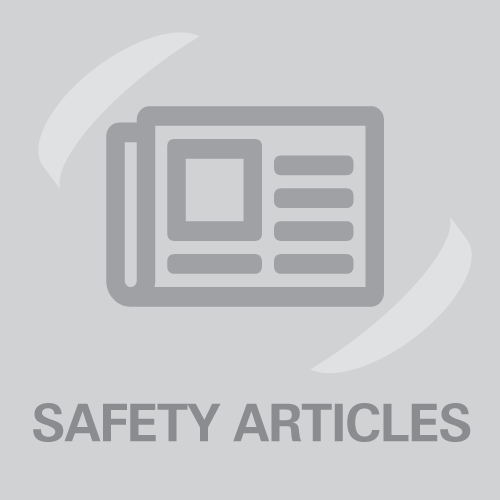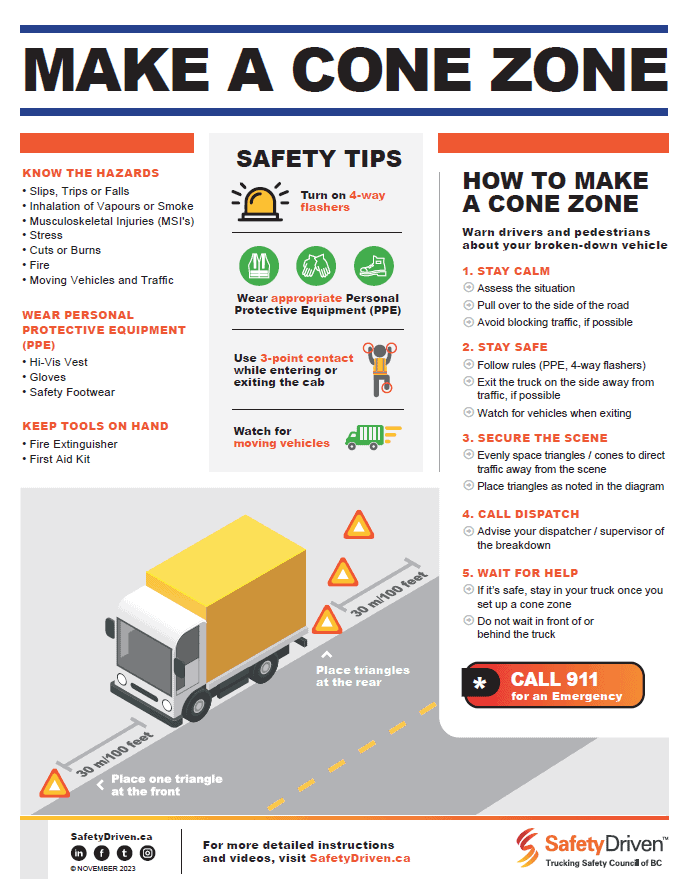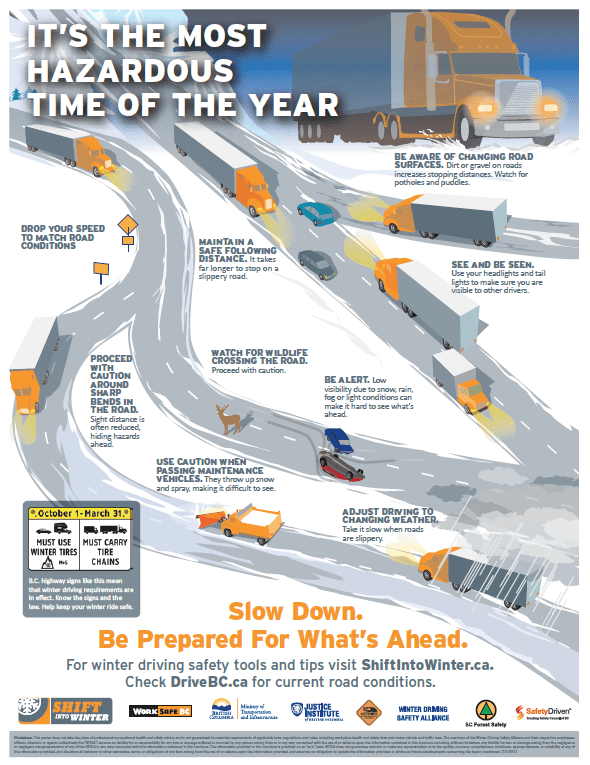
Reminding Truckers About the Hazards of Stopping Roadside
Truck drivers need to minimize risk when they are forced to stop roadside — often on busy highways — to chain up tires, check a load, or address an issue.
This is the first post in a two-part look at road safety. Stay tuned for next week’s post on the auto-recovery and towing industry.
Between 2009 and 2018, 13 roadside workers in B.C. died as a result of being hit by a motor vehicle. A third of them were truck drivers stopped on the roadside.
Putting on tire chains, checking a load, and dealing with mechanical problems are among the reasons a driver may have to stop along the road. It can be especially hazardous on highways.
“Drivers are often dealing with high speeds, narrow work areas, blind corners, and environmental conditions that make things worse,” says Jacqueline Morrison, an industry specialist for Transportation and Occupational Road Safety at WorkSafeBC. “Obviously if something mechanical happens to the truck, they have to stop — it’s not like they have a choice. But do they know where there are rest areas or pull-out areas so they can stop safely?”
Employers are responsible for workers’ safety
It’s up to employers to make sure their workers understand the hazards of stopping on the roadside. They also need to ensure that drivers have job-specific training to set up a safe work zone on the side of the road and that trucks have the proper equipment.
This equipment includes high-visibility vests, a safety triangle, cones, emergency lights, and flares. But often drivers are so focused on the truck that they forget about the traffic, says Jacqueline.
“Putting on a high-vis vest is the first thing drivers should do before getting out of the vehicle and setting up a safe work zone — it shouldn’t be the last thing. If someone is coming around the corner at speed, it makes it harder for them to slow down if they don’t see you soon enough.”
Setting up a safe work zone
Drivers can help reduce the risk for themselves and others by following safe work procedures and reporting unsafe conditions to their supervisors. When they do have to stop by the side of the road, drivers should perform a risk assessment that includes questions like:
- Is this a safe area to pull over? Are there better options down the road?
- Am I pulling far enough over that I’m not sitting on the fog line?
- Can I safely exit the vehicle and work around the truck without crossing the fog line?
- Can I position the truck so it acts as a barrier between me and other vehicles?
- Is my placement of cones, triangles, and road flares giving other motorists enough time to react so that they can slow down and change lanes?
Since 2011, the Work Zone Safety Alliance has been reminding drivers to watch out for the thousands of people in B.C. who work near traffic. To learn more, see my post Slow your speed and focus your thoughts in the Cone Zone.
For information and resources, visit worksafebc.com and SafetyDriven — Trucking Safety Council of BC.
Stay up to date on safety and sign up for our weekly newsletter!
Latest Resources
Make a Cone Zone
Dowload this poster for tips on how to make a safe cone zone.Winter Hazards Poster
Drivers need to recognize winter hazards. Share this poster to remind drivers how to ...

